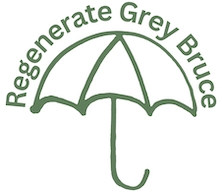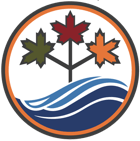On Landscape Narratives
What are Cultural Narratives? What are Landscape Narratives?
Bridget A. Evans explains narratives using the image of a fish in the ocean - water shapes the fish’s reality in every aspect but if one was to ask a fish the question, “What is water?” a fish would not know. This is because narratives are mostly invisible to us even though they shape the way we perceive and interpret the world. Narratives cannot be encapsulated in one sentence, or even in a few paragraphs, since narratives are made up of both the collective and individual stories community members are telling themselves, about themselves, and are lived out through the actions and decisions made day-to-day.
Apply this to landscapes - what are the stories, both collective and individual, that make up a Landscape Narrative? Stories that reveal the valuing of financial profit, neighbourly cooperation, and responsibility for other living beings all can exist in the same landscape narrative.
The Grey Bruce landscape is a mosaic of features that intersect and transition to one another. Some areas are open grasslands while others are closed-canopy maple forests, hedgerows, tree lines, and small groups of trees. Wetlands, rivers and river valleys, the beautiful coasts of Lake Huron and Georgian Bay, rolling hills that 1000-year old glaciers left, and hummocky topography and surfacing karst all make up the unique landscape of the region.
Mosaic landscapes are the result of both accidental (i.e. mixed agricultural landscapes unintentionally providing wildlife habitat that would not be available in late succession forests) or intentional human disturbance of ecosystems, and it is important to note that human management of landscapes has been going on for thousands of years. Before European settlers arrived, First Nations in this region formed similar landscapes with controlled burns, attracting wild herds, and sowing berries, nut and fruit trees.
The health of our landscape is less and less accidental as humans increasingly make decisions that are inherently exploitative and destructive, with many feeling the need to do so because of personal values, financial stress and a proprietary relationship to land.

Don't Forget!
Remember, the goal of RGB now is to amplify this emerging narrative we've uncovered, the collective and individual stories we tell ourselves, about ourselves, acted out in real time through our decisions and actions. You can take action by:
PLANT (POLLINATORS and NATIVE SPECIES): Addressing barriers community members face in regenerating their surrounding landscapes i.e. planting native plants; supporting a regional native plant supply chain; and, bringing together nursery owners, farmers and seed collectors, etc.
SHARE (YOUR STORY): Publishing, Highlighting and Inviting more stories into the emerging narrative to i.e. Regeneration Stories, Presentations, StoryMap, Social Media, Signage/Messaging, etc.
INSPIRE (TO JOIN): Directly inviting friends, family, co-workers, etc. to join the work i.e. Theory of Change, Guide for Intergenerational Collaboration, YCAC collaboration, Wiarton Tiny Forest Collaboration, RGB Seed Collectors, etc.
